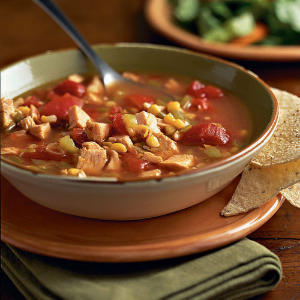Improving the Quality of Life
When March rolls around, the temperatures are a little warmer and the air smells like Spring I know it’s time to get started with Spring Cleaning.
If you start with the plan I devised , and clean one room at a time you will have success.
Below I have outlined what needs to be done in each room of the house to make the room shine, and sparkle!
Note: The only cleaning products needed are Norwex micro-fiber cloths and water. No paper towel, or chemicals. However, if you invest in the Mother’ Helper, you will have an Enviro Cloth, Window Cloth, and Dust Mitt and be ready to get started. The rest of the items described are optional, but listed to show you environmentally friendly, alternative ways to clean safely and effectively without chemicals.
Living Room and Dining Room
Start at the room that gets the most use and public exposure. Do all the dusting in both rooms, then windows etc for that economy of scale efficiency.
1. Dust and De-clutter– Use the Norwex Microfiber mitt or Enivro cloth dry, to thoroughly dust the entire room. Clear the clutter as you go. Use the 3 box system- give-away, throw-away, and put-away. Use the Norwex mop system to wipe down walls and remove cobwebs, if desired.
2. Curtains and Drapes – Curtains can be machine washed with Norwex Ultra Power Plus Laundry Detergent . It only takes 1 tsp in a front loading machine. Line dry if possible for that really fresh and clean scent. Dry Clean only drapes can be tumbled in a cool dryer to remove dust. Re-hang.
3. Windows – Next wipe down all the windows with a damp Enviro Cloth and then polish with
the Window Cloth. You won’t believe how quick and easy the window polishing goes with a dry micro-fiber window cloth.
4. Upholstery – Spot clean using an Enviro cloth and water. Vacuum cushions, backs, under cushions.
5. Vacuum – the room thoroughly including under furniture around the edges.
6. Air the Room – If it is warm enough – open the windows!
7. Re-Arrange furniture for a seasonal change if desired. VOILA – you are done!
Bedrooms
Repeat the same steps above: Dust and De-clutter, Curtains and Drapes, and Windows.
1. Beds – Wash mattress pad, blankets, and other bedding in the Ultra Power Plus Laundry Detergent. Hang out to dry if possible. Turn mattress. Spray with Mattress Cleaner if desired, it only contains enzymes. Make up the beds.
2. Vacuum the room thoroughly including under furniture and bed around the edges of the room.
Kitchen and Pantry
This is probably a big job if it hasn’t been done lately. So allow plenty of time – or take it a few cabinets at a time or use 15-30 minute time segments daily until the job is done. Getting started is the hardest part.
1. Cabinets – Clear everything out of the cabinets. Purge unused, and out-of date items. Wipe down the inside and outside cabinet surfaces with a damp Enviro Cloth. Apply lemon oil to wood cabinets if desired.
2. Refrigerator – Clear everything out of the refrigerator or do it shelf by shelf, drawer by drawer. Purge unused, moldy, and out of date foods. Wipe shelves and exterior of refrigerator with a wet Enviro Cloth. Polish with dry window cloth. Plastic drawers should be removed, washed and dried. Re-assemble everything neatly and you will be amazed at how much more room you now have!
3. Floors – I like to use the Norwex mop system to get the floor dry mopped, and then wet mop. It only takes water and does a very thorough job without getting on hands and knees.. Or use what you have to mop thoroughly.
4. Oven – If you do not have a self-cleaning oven, water and spirinettes with lots of elbow grease will do the job or consider the Norwex Oven Cleaner – it is enzyme based.
5. Cook Top – Smooth top and conventional electric ranges can be maintained and polished with an Enviro Cloth and window cloth. If you have tough burned on food use the cleaning paste with a damp Enviro or the Micro-pad.
Bathrooms
Surprisingly, you can get most of the bathroom cleaned up very well using an Enviro Cloth and water. Since the Enviro clothes are anti-bacterial no disinfectants are needed. Here are some additional steps and products that you may enjoy trying.
1. Toilet– Sanira Toilet System – Both cleaning solution and brush are produced from environmentally friendly raw materials. The cleaning solution is vegetable based with coconut oil and a naturally- occurring sugar surfactant. The brush does not contain any metal parts. Using only ¾ tsp a week, this solution will last about a year. Compare to 2 Tbsp of traditional cleaner and save.
2. Throw Rugs – Wash with Ultra Power Plus Laundry Detergent and hang out to dry. Replace.
3. Mirrors – Wipe with a damp Enviro and polish with dry Window Cloth for a streak free shine in seconds.
4. Floors – Use Norwex Mop System to dry and wet mop.
5. Shower & Tubs – Maintained weekly with an Enviro cloth and water you won’t have much extra work. Wash out shower curtain liners and shower curtain with Ultra Power Plus Laundry Detergent and rehang after the shower is cleaned up.
6. Shower Doors can be descaled the safe non-toxic way with De-Scaler a wonderful gel that removes lime scale easily. If there is a heavy build -up it will take several applications to get bright and shiny. The netted dish cloth can also be used to remove soap scum.
Halls and Closets
Apply the above products and principles of de-cluttering, wiping down, mopping and/or vacuuming to closets and hall ways. Wash and dry throw rugs and replace.
When you get everything done, email me and I will enter you into a drawing for a Norwex Cleaning Kit to include one each of the Norwex Cleaning Paste, The Bathroom Scrub Mitt, a Spirisponge and a Promotional Window Cloth. This package has a $60.00 value.
Follow me at Facebook: http://www.facebook.com/urbanhomemaker
Follow me at Twitter: http://www.twitter.com/TheUrbanHome










